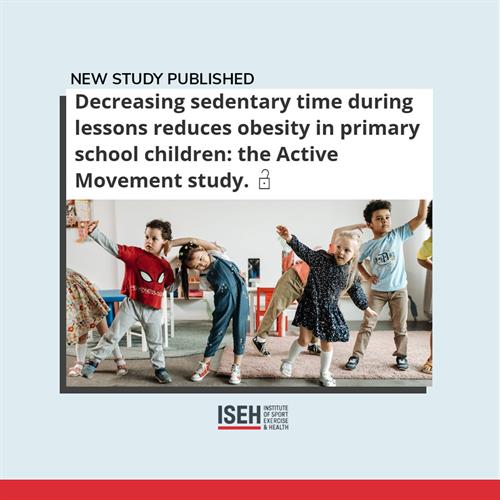
A recent study conducted by a dedicated research team with colleagues from the Institute of Sport, Exercise and Health (ISEH) leading this, has revealed that incorporating more movement into lessons resulted in an 8% reduction in children's waist-to-height ratio. Published in Obesity Facts, this research marks the first scientific assessment of how reducing sedentary behaviour in classrooms impacts obesity in primary school children. The positive impact on children's weight, irrespective of socio-economic factors, suggests that this approach could be a cost-effective means to enhance children's health.
As of the latest estimates in 2022-23, 22.7% of Year 6 children in England are considered obese, up from 18.9% in 2012-13. Previous interventions focusing on exercise in schools have shown short-term success but were resource-intensive and lacked sustained behavioural changes.
In this study, the researchers explored the effect of reducing sedentary time, rather than increasing exercise, on physical activity and obesity in children across 30 UK state primary schools. Teachers in 26 of these schools were trained to integrate Active Movement into lessons, while four control schools continued with regular teaching. Active Movement, a novel approach targeting child inactivity, integrates non-sedentary behaviour and low-level activity into daily routines.
All schools completed self-reported surveys on children's activity levels in terms one and three, with three intervention and three control schools also measuring waist-to-height ratio. Schools incorporating more movement witnessed an 8% reduction in waist-to-height ratio, coupled with a 10% increase in sports participation between term one and term three. Notably, children with a higher baseline waist-to-height ratio showed the most significant improvement, regardless of socio-economic status, age, or gender.
ISEH's Dr Flaminia Ronca, first author of the study, said: “Studies have shown that for most children in the UK, classroom time is the most sedentary part of their life. By introducing movement into teaching in creative ways, such as standing up to answer questions or walking around the classroom as part of a learning exercise, we can significantly reduce their sedentary time and our study shows that this can lead to a recognisable improvement in their waist-to-height ratio.”
The intervention schools followed the Active Movement programme, developed by Professor Mike Loosemore and Peter Savage. This school-based initiative integrates behaviours like standing and walking into the classroom, aiming to introduce non-sedentary behaviour and low-level physical activity without disrupting the curriculum.
Peter Savage, an author of the study from Active Movement, said: “When we first propose the idea of active movement to teachers, their first reaction is often to say that they don’t know how they’ll manage to do this on top of everything else. But they usually discover that active movement can make a classroom easier to manage, rather than harder. Not only are children getting physical benefits from being less sedentary, the learning environment is improved.”
In the UK, obesity affects children across all backgrounds, with those from deprived areas being more than twice as likely to be obese. The approach tested in this study is particularly valuable as it doesn't require schools to invest heavily in equipment or additional staff.
ISEH's Professor Mike Loosemore, senior author of the study and consultant in sport and exercise medicine, said: “Our results show that reducing sedentary behaviours during school time can be an effective obesity reduction strategy for primary school children who are overweight.
“What’s even more encouraging is that this method was effective regardless of the child’s socio-economic status, age or gender. It is something that schools could introduce without needing to invest heavily in equipment or staff, and everyone will benefit.”
Read the full research paper.